Tihar- A Five-Days Long Festival of Lights.
Nepal, the country where religion and tradition matters a lot for people than any other things. Nepal celebrates many notable festivals. As mostly dominated by Hindus and Buddhists, many festivals of Nepal are religious ones. The government of Nepal also declares a National Holiday on these days.
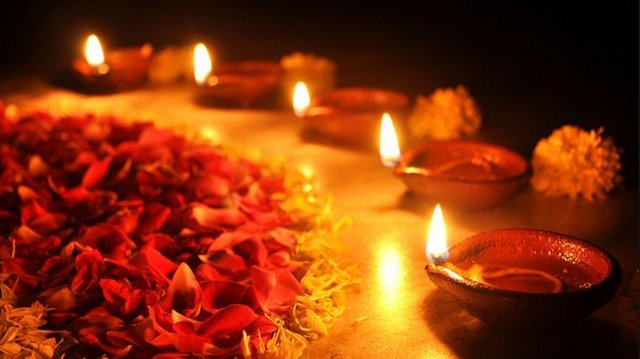
Among the main and biggest festivals of Nepal, Tihar or Dipawali is one. It is the five day’s long festival mainly celebrated all over Nepal and neighbouring states sharing boundary. Tihar is the second biggest Nepalese festival after Dashain. It is considered to be of great importance as it shows reverence to not just the humans and the gods, but also to the animals like crows, cows, and dogs that maintain an intimate relationship with humans. People make patterns on the floor of living rooms or courtyards using materials such as colored rice, dry flour, coloured sand or flower petals outside of their house, called Rangoli, which is meant to be a sacred welcoming area for the Gods and Goddesses of Hinduism mainly Goddess Laxmi. Since Nepal lunar calendar won't be published in advance, we couldn't figure out the exact date of Tihar Festival. Anyway, it often falls between mid-October and mid-November.
Essence of Tihar
Tihar is celebrated for five days and bestowed with traditional cultural characteristics of Nepal. And each Tihar holiday has its own saying. The first day of Tihar is to worship crows, "the messenger of death". People often sprinkle rice on the ground for crows' pecking. The second day of Tihar is to honor dogs, "the guardian for the god of death". The third day is to welcome the Goddess of Laxmi. The forth day is to thank cows. The fifth day is to place Tihar quotes (Tihar Tika) to brothers and present Tihar gifts for sisters.
Day 1. Kaag Tihar/Crow day
On the first day of Tihar Festival, people will offer rice to the crows, "the messenger of death". These crows are busy all year round, and only have this day to rest. It is important to ensure that the crows are happy, otherwise they will inform the bad news, and bad things would happen in the coming year.
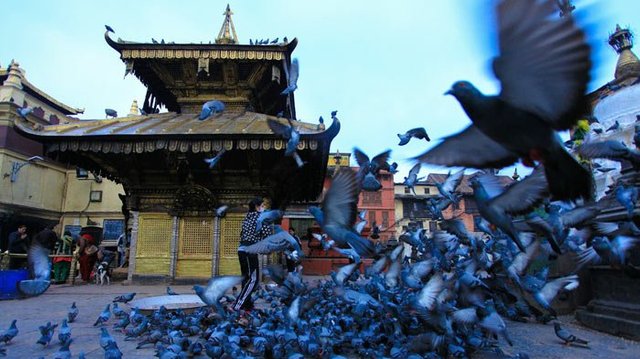
Day 2. Kukur Tihar/ Dog Day
On this day, Nepalis will honor dogs for they believe that the dog can guarantee the souls of the dead to get to heaven. People usually wear dogs with Tihar Tika and calendula garlands, and then treat them with a fancy dinner. In Nepal, the dog plays an important role as "the gatekeeper of death", which is said to lead the deceased across the river of death in the underworld. On Kukur Tihar, Nepalese policemen will present beautiful garlands to the patrol dogs and paint their foreheads in red cinnabar to thank for their contributions in social security.
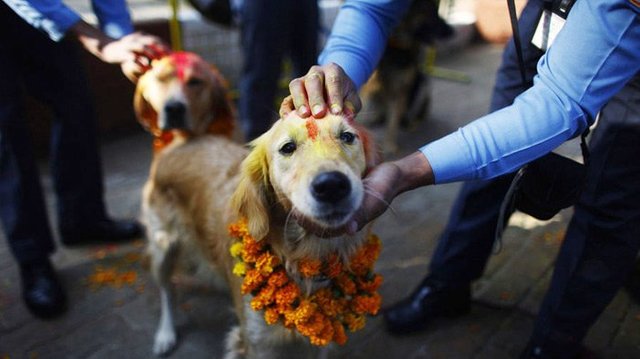
Day 3. Gai Tihar and Laxmi Pooja/ Cow Day
On the third day of Tihar Festival, Nepalese often worship cows and Laxmi, the goddess of wealth. This day is also the most important holiday in the festival. People would get up early and clean the room thoroughly. Hence, they start to thank cows. After a cozy bath, those cows will wear red Tika and beautiful wreaths, with holy strings from the priest tied to their tails.
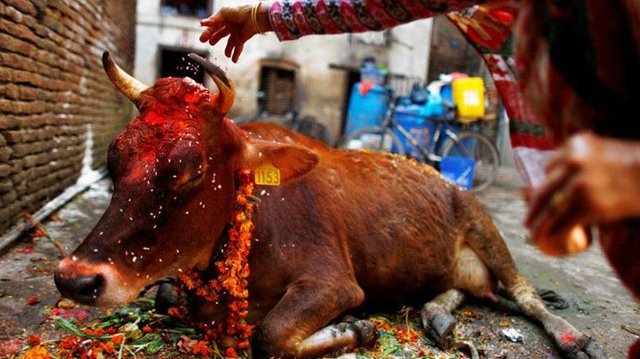
When the night falls, dazzling candles, oil lamps and bright lights are lit up at the doors, steps, even on the roof. All the Nepalis will make their home as luminous as possible to attract Laximi's attention. If the day happens to be Saturday, shops and stores won't follow the traditional practices and keep open to welcome the goddess of wealth. At this moment, Nepalis kids won't be idle. They come to visit neighbors in small groups and sing Tihar songs like Bhailo and Deusi for blessings. In return, the house owner give them money, fruit and sweets.
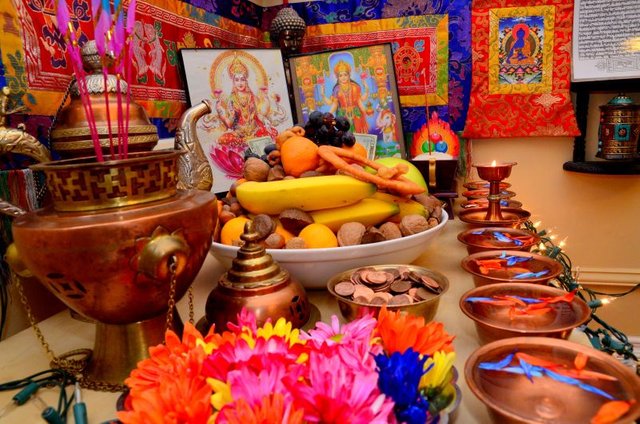
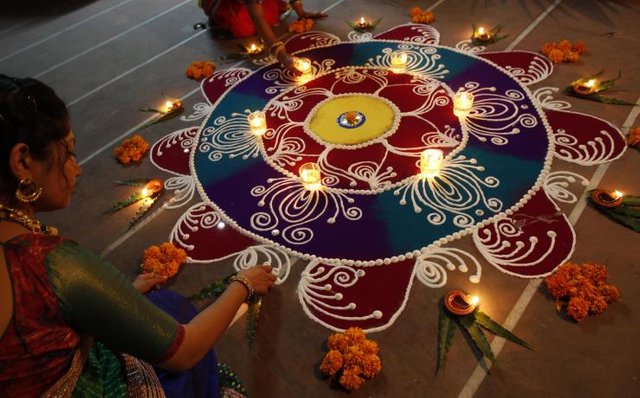
Day 4. Govardhan Pooja, Maha Pooja and Goru Pooja
As ox is an indispensable helper for the farmer, people will perform Goru Puja for ox. Considered as the representative of Govardhan Mountain, cow dung is worshiped in Govardhan Puja. In addition, this day is also seen as the beginning of the new year for Newar community in Kathmandu valley. All the Newarians will reunite for this festival and perform Mha Puja to worship themselves.On this day, the elder father would draw two geometric figures. One is painted for blessing the whole family and the other is dedicated to the death of Yama and his messenger. Then all the members will have a special family feast and enjoy some lucky food, like boiled eggs, fried fishes, tasty desserts, etc. After the grand banquet, they'll take turns to worship the death of Yama Panchak and exchange Tihar gifts with each other to pray for good luck in the next year.
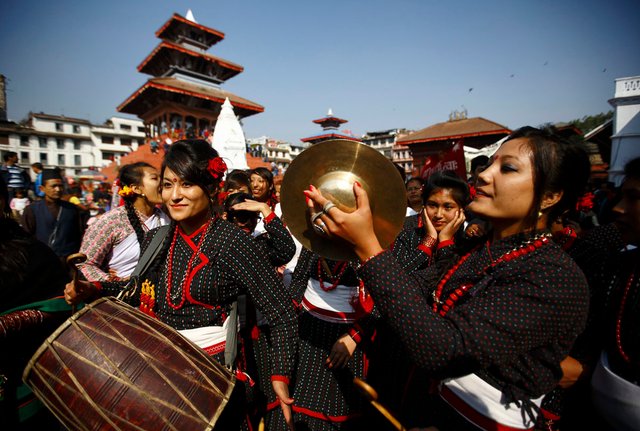
Day 5. Bhai Tika/ Brothers' Day
The last day of Tihar is knowned as Bhai Tika. On this day, brothers and sisters will gather together and accept Tihar quotes on their foreheads. After placing the multi-colored Tika and splendid garlands to the brothers, the sisters would offer them some Shaguns (a kind of candy) as Tihar gift. And then the brothers would follow the same ritual to put Tika on their sisters and give them some money in return. This celebration has enhanced the close relationship between brothers and sisters.

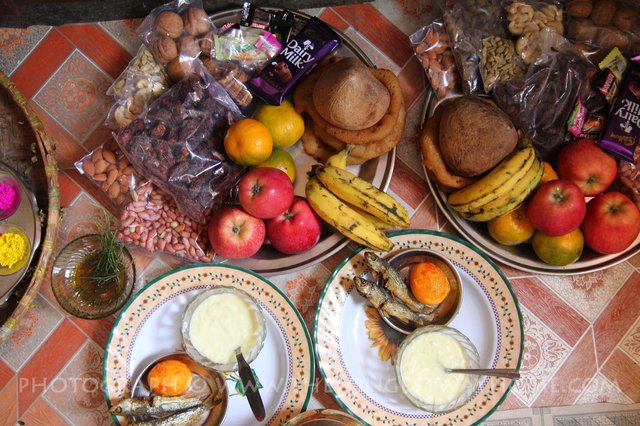
Celebration
There is no formal ceremony for Tihar Festival. And it's just similar to Christmas and New Year Festival in other parts of the world. On the eve of Tihar, the husband will buy gold and silver jewelry for his wife. After the festival of lights commences, houses and rooms will be cleaned and painted to show respect for the gods and goddesses. Nepalese put on their new clothes and make determination to start a new life. The merchants begin to use the new account book instead of the old one.At night, each family and stores will lit varieties of colorful lights, and the sky is filled with spectacular fireworks. During this festival, friends and relatives will get reunion and exchange Tihar gifts and greetings with each other. The climax of Tihar in Nepal is bathing in the holy river to purify the body and mind. In addition to pray to the gods for the health of the whole family, Nepalis also pay special respect to Laxmi, the goddess of wealth and luck.